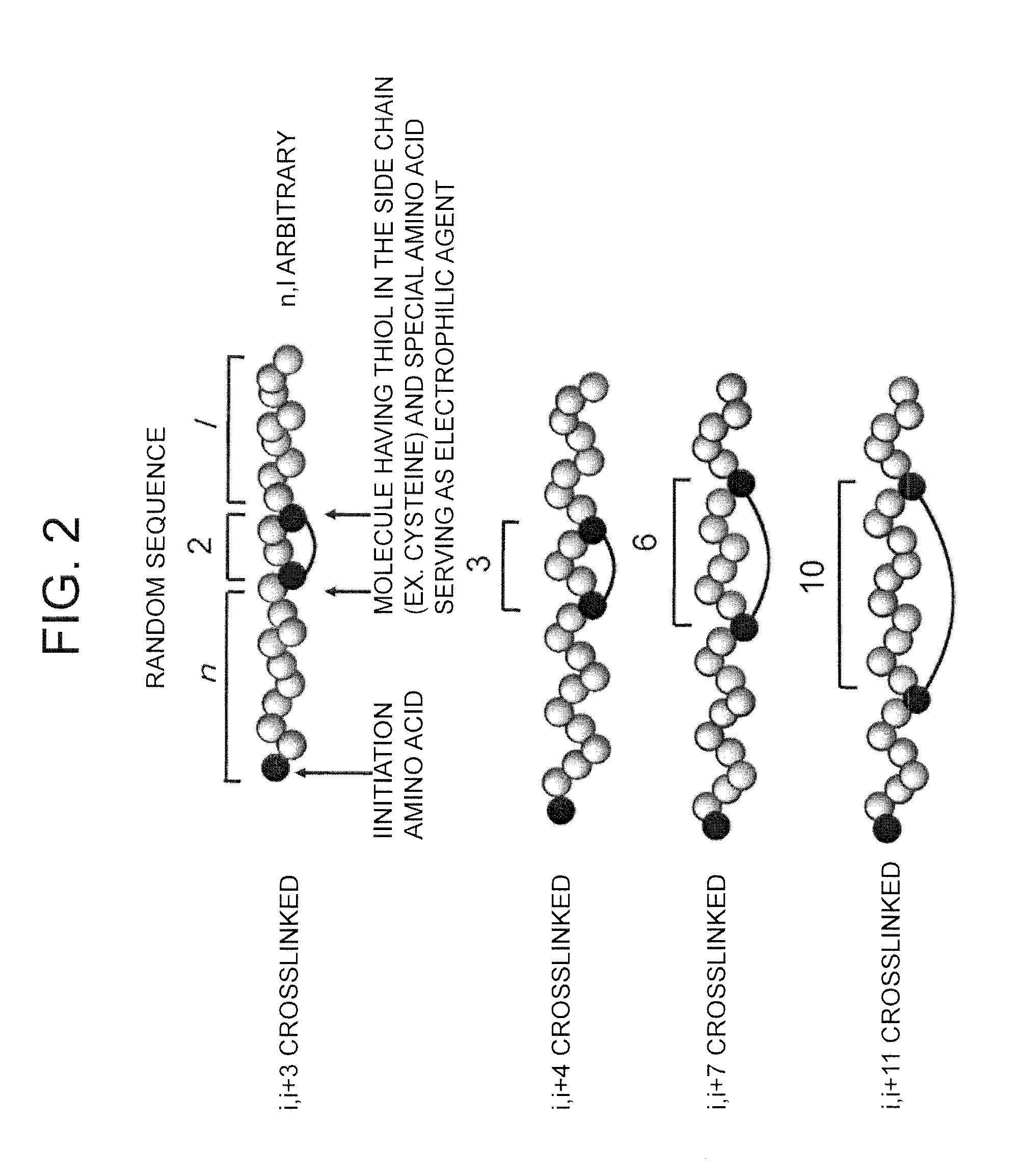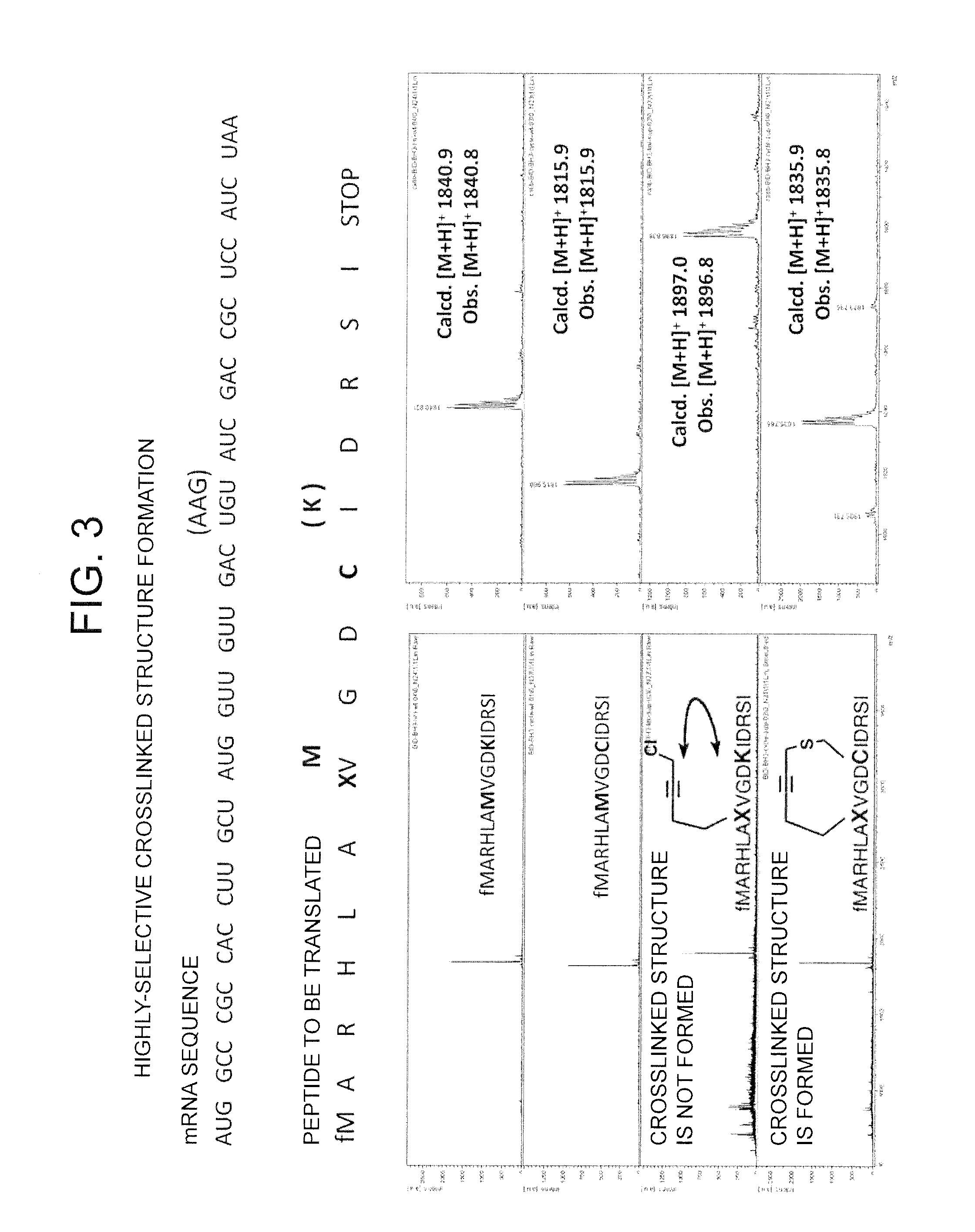Peptide with Safer Secondary Structure, Peptide Library, and Production Methods for Same
a secondary structure, safer technology, applied in the field of peptide molecules, can solve the problems of inability to keep its structure, limited number of usable special amino acids, and in vivo stability, and achieve excellent cell membrane permeability, high selectivity, and high affinity with a target.
- Summary
- Abstract
- Description
- Claims
- Application Information
AI Technical Summary
Benefits of technology
Problems solved by technology
Method used
Image
Examples
example
[0201]In order to obtain a peptide that binds to the site of intermolecular interaction by the BH3 domain of Bcl-2 and thereby inhibits its intermolecular interaction, a peptide library (NNU mRNA library) having, in the sequence thereof, a crosslinked structure formed by a special amino acid and cysteine was constructed, followed by selection using the mRNA display method.
NNU mRNA Library
[0202]First, a double-stranded DNA having the following sequence was prepared (in the following sequence, only a Forward strand is described in the order of 5′→3′). TAATACGACTCACTATAGGGTTAACTTTAAGAAGGAGATATACAT (ATG)(NNT)s (ATG) (NNT)3 (TGC)(NNT)t (GGT) (AGC) (GGC) (AGC) (GGC) (AGC) (TAG)G ACGGGGGGCGGAAA
[0203]With regard to the translation region, one codon is shown in parentheses; N represents any one of A, T, G, and C; s and t stand for the repetition number of the triplet and correspond to 2 and 8, 6 and 4, 2 and 12, 6 and 8, 10 and 4, 2 and 16, 6 and 12, 10 and 8, or 14 and 4, respectively.
[0204...
PUM
| Property | Measurement | Unit |
|---|---|---|
| pH | aaaaa | aaaaa |
| pH | aaaaa | aaaaa |
| dissociation constant | aaaaa | aaaaa |
Abstract
Description
Claims
Application Information
 Login to View More
Login to View More - R&D
- Intellectual Property
- Life Sciences
- Materials
- Tech Scout
- Unparalleled Data Quality
- Higher Quality Content
- 60% Fewer Hallucinations
Browse by: Latest US Patents, China's latest patents, Technical Efficacy Thesaurus, Application Domain, Technology Topic, Popular Technical Reports.
© 2025 PatSnap. All rights reserved.Legal|Privacy policy|Modern Slavery Act Transparency Statement|Sitemap|About US| Contact US: help@patsnap.com



